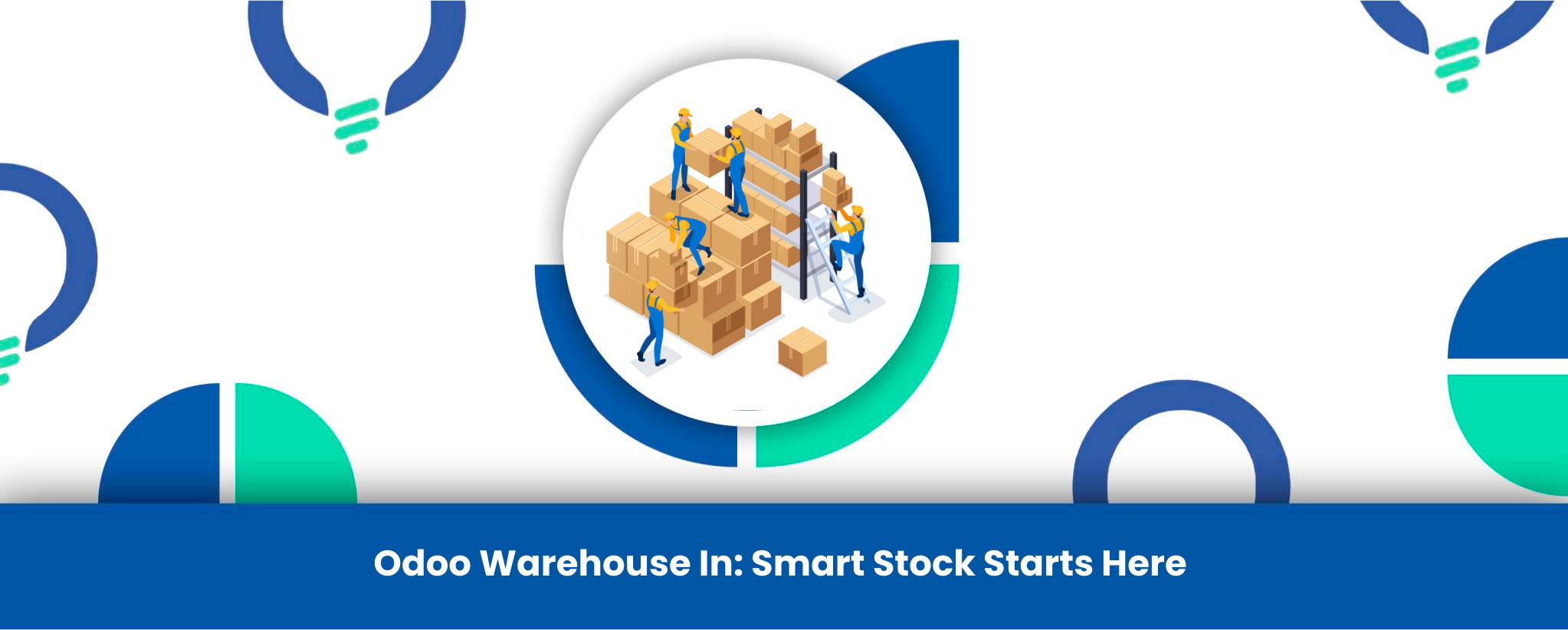Managing inbound warehouse operations in Odoo manually—especially when dealing with hundreds or thousands of products—is a tedious and error-prone task. The Warehouse In module for Odoo ERP solves this challenge by automating the process of importing barcode data from an Excel file directly into your Odoo inventory system. Designed to simplify bulk inventory updates, this module reduces manual data entry, minimizes errors, and accelerates the inbound logistics process.
Whether you’re receiving shipments from suppliers or transferring stock between locations, Warehouse In ensures seamless integration with Odoo’s warehouse management system while maintaining data accuracy. By eliminating repetitive tasks, businesses can reallocate valuable time to strategic operations through odoo optimization and odoo customization services from Reliution.
Key Features
Here’s how the module enhances efficiency in Odoo’s warehouse management:
Excel-Based Barcode Import: Upload an Excel file containing a single column of barcodes to initiate an inbound stock operation. No complex formatting is required, reducing setup time.
Automatic Quantity Calculation: If the same barcode appears multiple times in the file, the module aggregates the total quantity, removing the need for manual counting—a major benefit for Odoo stock intake automation.
Real-Time Inventory Updates: Ensures stock levels are adjusted immediately upon import, keeping inventory data accurate and up to date within Odoo Inventory.
Error-Resistant Workflow: Validates product quantities and operation types during the import to prevent inconsistencies in stock records, improving reliability and reducing support needs—available through 24/7 Odoo support from Reliution.
Time Savings: By automating inbound inventory processes, employees can focus on higher-value tasks such as quality checks or supplier coordination.
Real-World Use Cases
1. High-Volume Retail Receiving
A retail business receiving a bulk shipment of thousands of products can use Odoo Warehouse In to scan barcodes directly into an Excel file (via a handheld scanner or supplier-provided list). Instead of manually entering each item, the team uploads the file, and Odoo processes the entire shipment in seconds—calculating totals for duplicate SKUs. This eliminates bottlenecks during peak receiving periods using Odoo inbound inventory automation.
2. Manufacturing Component Inventory
A manufacturer sourcing components from multiple suppliers can automate the intake of raw materials. Warehouse managers upload supplier-generated barcode lists, and the system updates inventory levels without requiring manual reconciliation. This ensures Odoo production planning tools always reflect accurate stock availability—enhancing Odoo performance and supporting odoo erp customization.
Business Benefits
Reduced Operational Costs: Cuts down on labor hours spent on manual data entry and verification—ideal for companies seeking odoo pricing plans that maximize ROI.
Minimized Stock Discrepancies: Automatic quantity calculations prevent human counting errors, ensuring better Odoo warehouse control.
Scalability: Handles large import volumes effortlessly, making it ideal for growing businesses supported by odoo implementation services and odoo migration services.
Compatibility: Works seamlessly with Odoo’s native Inventory (stock) and Discuss (mail) modules for end-to-end traceability, communication, and integration with other Odoo modules. Powered by Reliution’s Odoo consulting services.
Conclusion
The Warehouse In module is a powerful tool for businesses looking to optimize their inbound inventory and logistics in Odoo. By leveraging Excel-based automation, companies can significantly reduce processing time, improve data accuracy, and focus on growth-oriented tasks. For businesses needing advanced support, Reliution offers Odoo customization services, Odoo integration, and Odoo migration service to scale your inventory success.
Ready to streamline your warehouse operations?
Explore the module on the Odoo App Store or visit Reliution’s website for more details on odoo warehouse in solutions.




